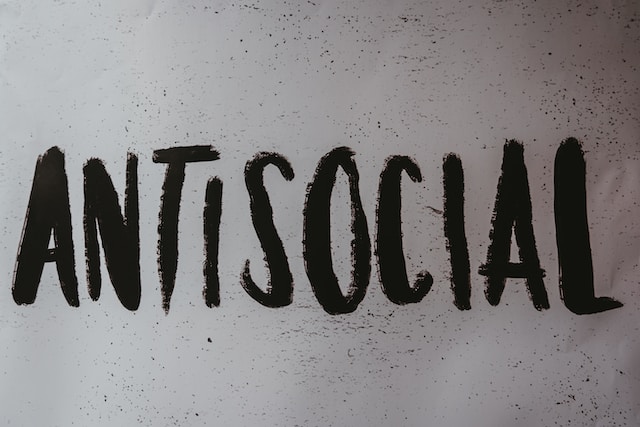Asocial refers to avoiding social interaction; antisocial pertains to violating social norms or laws. Asocial is isolation; antisocial is misconduct.
TL;DR Asocial Behavior Vs. Antisocial Behavior
Asocial behavior refers to a preference for solitude or minimal social interaction. Individuals who exhibit asocial behavior often find solace in their own company and do not necessarily feel the need for extensive social connections. This does not mean that they are inherently unfriendly or hostile towards others; rather, it simply means that they prefer to be alone or have limited interactions with others.
Antisocial behavior is characterized by a disregard for societal norms and a lack of empathy towards others. People who display antisocial behavior tend to engage in actions that harm or exploit others without remorse. They may manipulate, deceive, or even act aggressively towards those around them.
Characteristics of Asocial Behavior

Asocial behavior is characterized by a persistent avoidance or disinterest in social interactions. Individuals exhibiting asocial traits may prefer solitude, independence, or limited social engagement.
They might lack a strong desire for companionship, social activities, or conforming to societal norms. Asociality differs from antisocial behavior, as it does not involve aggression or intentional harm.
While some level of asocial behavior is normal and a personal preference, extreme asociality can impact relationships and may be linked to mental health factors, such as social anxiety or personality traits like introversion.
Characteristics of Antisocial Behavior
Antisocial behavior involves a pattern of actions that violate social norms, rights, or laws.
Characteristics include disregard for others’ feelings, deception, impulsivity, aggression, and a lack of remorse. Individuals with antisocial traits may engage in deceit, manipulation, or criminal activities, often displaying a persistent disregard for societal rules.
This behavior may be associated with antisocial personality disorder. Early-onset antisocial behavior in youth can be a precursor to more severe issues in adulthood. Effective intervention often involves therapeutic approaches, emphasizing empathy development and addressing underlying factors contributing to the behavior.
Asocial Behavior Vs. Antisocial Behavior – Key differences
| Criteria | Asocial Behavior | Antisocial Behavior |
|---|---|---|
| Social Interaction | Avoidance or disinterest in social interactions | Violation of social norms, rights, or laws |
| Preference | Prefers solitude, independence, or limited social engagement | Engages in deceit, manipulation, or criminal activities |
| Desire for Companionship | Lacks a strong desire for companionship or social activities | May lack genuine empathy, disregard for others' feelings |
| Impact on Relationships | May lead to limited relationships but not necessarily harmful | Often associated with strained relationships and harm to others |
| Motivation | Driven by a preference for solitude or independence | Motivated by a lack of regard for societal rules and norms |
| Typical Associations | May be linked to personal preferences, introversion, or social anxiety | Associated with antisocial personality traits or disorders |
| Harmful Intent | Generally does not involve intentional harm to others | May involve deliberate harm, aggression, or manipulation |
| Criminality | Not inherently criminal or harmful behavior | May involve criminal activities or conduct |
| Emotional Connection | Lack of emotional engagement but not necessarily malicious | Often lacks empathy, remorse, and may involve intentional harm |
| Therapeutic Approach | May involve addressing social anxiety or personal preferences | Requires interventions targeting antisocial traits, focusing on empathy and addressing underlying issues |
Examples of Asocial Behavior
Examples of asocial behavior involve a preference for solitude or limited social engagement without the intent to cause harm. It’s important to note that moderate asocial behavior is a personal preference and not necessarily problematic. Examples include:
- Preferring Solitude: Choosing to spend extended periods alone without feeling distressed.
- Limited Social Activities: Participating in fewer social events or gatherings due to personal comfort.
- Independent Hobbies: Engaging in activities that are primarily solitary, such as reading, writing, or individual sports.
- Minimal Small Talk: Avoiding superficial social interactions without malice.
- Online Interaction: Preferring online communication over face-to-face interactions.
- Focused Work: Immersing oneself in work or projects without frequent collaboration.
Asocial behavior becomes concerning when it significantly impairs functioning or causes distress.
Examples of Antisocial Behavior
Examples of antisocial behavior involve actions that violate social norms, rights, or laws and may harm others. It is important to distinguish between the term “antisocial behavior” and the clinical diagnosis of “antisocial personality disorder.” Examples include:
- Deception: Lying, manipulating, or being deceitful to achieve personal goals.
- Aggression: Physically or verbally harming others, expressing hostility.
- Criminal Activities: Engaging in illegal actions, such as theft or vandalism.
- Disregard for Others: Showing a lack of empathy or concern for the feelings and well-being of others.
- Violation of Rules: Consistently breaking societal rules and norms.
- Bullying: Intimidating or causing harm to others through verbal or physical means.
- Impulsivity: Engaging in reckless behavior without consideration of consequences.
- Failure to Fulfill Obligations: Neglecting responsibilities or commitments.
It’s important to note that these behaviors can be indicative of various issues, and a comprehensive evaluation by mental health professionals is necessary to determine appropriate interventions. The term “antisocial behavior” is distinct from the clinical diagnosis of “antisocial personality disorder,” which involves specific criteria and a pervasive pattern of behavior.
Image Credits
Featured Image By – FIRST online from Pixabay
Image 1 By – Claudio Schwarz on Unsplash









